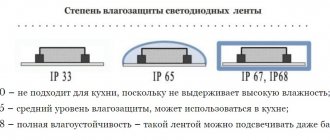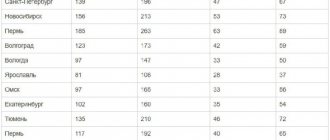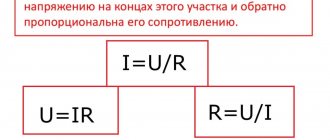In the post-war period, the USSR was faced with the task of restoring the national economy. Much attention was paid to the electrification of the country. Outdated transformers, whose output voltage was limited to 110-127 Volts, were replaced with new equipment with a 220 Volt standard. For a long time in the Soviet Union, and then in the Russian Federation, the most common was the standard voltage of 220 V with a frequency of 50 Hz. And only in 1993 it was decided to bring the rated voltages of existing networks 220/380 and foreign 240/415 V to the value of 230/400 V. (GOST 29322-92 (IEC 38-83)). Today, voltage of 220 or 230 Volts is accepted as standard in more than 150 countries around the world. Within the framework of this article, we will tell readers of the Sam Electric website what the voltage standard is in the Russian network according to GOST.
What is power quality
Power quality meter
Quality indicators for each type of electrical line are set differently. The actual parameters must fully comply with those established in the regulatory documentation. It is this feature that determines the quality of the service provided.
Changes or transformations of PKE arise as a result of loss of resource during transportation over long distances, electromagnetic phenomena or abnormal increases in loads on the highway.
To assess the quality of electricity, it is necessary to measure basic indicators. You can study them in detail in the regulatory documents of GOST No. 13109-97.
General information about electrical networks
An electrical network is a set of electrical installations for the transmission and distribution of electricity, including substations, distribution points, overhead (OHL) and cable power lines (CL), and conductors.
Based on their functional purpose, networks are divided into system-forming, supply and distribution networks.
Backbone networks are those designed to combine power plants and power systems for parallel operation (networks of 330 kV and above).
Supply networks are networks in which electricity is transmitted from substations of the backbone network or from 110...220 kV buses of large power plants to power centers of distribution networks over long distances.
Distribution networks are called networks designed to distribute electricity between power receivers. These include urban and rural electrical networks, as well as networks of industrial enterprises. The power centers of such networks are usually located at a short distance from a large number of power receivers.
What affects the characteristics of the power supply network
The quality of electricity is influenced by a fairly large list of factors:
- regular voltage drops as a result of connecting large loads;
- icing of supply lines;
- increased air humidity;
- the quality of electrical lines, the end of their operational period, their failure;
- At sea stations, ebb and flow tides are taken into account.
When it comes to wind farms, the quality of electricity can be adversely affected by changes in the direction and strength of wind flows.
How much do you need for electrical appliances?
Equipment manufactured in Russia for domestic consumers operates at both 220 V and 230 V, because manufacturers provide the required margin from -15% to +10%. from face value. But in each specific case, the permissible range of power supply characteristics for the device is indicated in the product passport or on its label. For example, computers can operate at 140 - 240 V, and a telephone charger at 110 - 250 V. These markings are often applied to the product itself.
Devices with electric motors are most sensitive to power quality. Here, a reduced voltage can lead to difficulties in starting and shortening the service life of the equipment, while an increased voltage will lead to overloads, which also shorten the service life. If you take a regular incandescent lamp and lower the supply voltage by 10%, the glow intensity will noticeably decrease, and if you increase it, its service life will be reduced by 4 times.
The permissible maximum network limit is 253 V. This value may be too high for electrical equipment designed for 220 volts. The difference in voltage will lead to overheating of power supplies, network adapters, and premature failure of devices.
If you notice that your equipment has begun to overheat or break down, check the voltage in the network. If a deviation of more than 10% is detected, immediately contact your network company. They are required to take measures to eliminate the factors that caused the violations.
Now you know what the voltage standard in the Russian network is according to GOST. If you have any questions, ask comments under the article. We hope the information was useful and interesting for you!
What happens when you deviate from normal diets
The power, performance and service life of electrical devices, especially on an industrial scale, directly depend on the quality of the supplied energy resource. A decrease in the efficiency of highways leads to an increase in electricity consumption. In appliance motors, the rotational torque decreases, lighting fixtures regularly flicker, and all types of lamps quickly fail.
Research in the field of physics has long shown that with a constant load on the engine, a decrease in voltage leads to a rapid increase in current strength, which negatively affects the performance, performance and service life of household appliances and other electrical devices. This leads to the combustion of electronic boards, and wires with insulating material may melt.
Criteria for assessing the quality of power supply
The assessment of power quality is influenced by a large number of different indicators.
- voltage deviation;
- voltage fluctuations;
- impulse voltage;
- frequency deviation;
- voltage dip;
- flicker dose;
- temporary overvoltage factor.
Voltage deviation
The value is calculated by a special coefficient that characterizes the steady deviation in relation to the nominal ones. You can verify the proper quality using a special electricity measuring receiver.
Voltage deviations from the norm are recorded when there are large losses when transferring resources over long distances or when the main line is overloaded. The maximum acceptable indicators are 10%.
Voltage fluctuations
The value characterizes deviations in the amplitude of electric current oscillations in the wires. Voltage fluctuation is an integral quality parameter. To calculate it you will need to first calculate:
- duration and frequency of deviations;
- dose of fluctuations;
- scope of changes.
To calculate the parameters you will also need special high-precision measuring equipment.
Pulse voltage
The magnitude manifests itself as a short-term increase in the amplitude of electricity. As a rule, the cause of such jumps is switching processes or bad weather outside the window. Such network states are characterized by unpredictability, therefore, impulse rationing is not provided.
Frequency deviation
This parameter is set to 50 Hz on public networks. Regulatory standards allow a reduction or increase in frequency of 2-4%. If permissible deviations are exceeded, electrical equipment fails and electric generators malfunction.
Voltage dip
The concept is characterized as a significant decrease in amplitude followed by recovery in a short period of time. The main provoking factors are a sharp increase in load or short circuit.
This indicator is described by the following characteristic features:
- frequency of deviations per unit of time;
- voltage sag force - in some cases it can tend to zero;
- duration.
The voltage dip also has a random nature of occurrence, therefore, standardization is not provided.
Flicker dose
The parameter shows what effect flickering lighting fixtures have on the human body as a result of changes in electrical parameters. The value is calculated using special measuring equipment.
Temporary overvoltage factor
This term refers to how much the actual amplitude is higher than the acceptable values. The main provoking factors are switching processes and short circuits.
Rated voltages of electrical networks
For AC networks, the standard range of rated voltages is: 220/127, 380/220, 660/380 V; 3, 6, 10, 20, 35, 110, 150, 220, 330, 500, 750, 1150 kV.
For voltages up to 1000 V, the numerator indicates linear voltage, and the denominator indicates phase voltage. Above 1000 V, only line voltage is indicated.
Voltage systems of 220/127 V, 3 kV and 150 kV are not used when designing for the future. The 380/220 V system is used to power most industrial and household consumers. Voltage 660/380 V is used in industry and mining.
Voltage classes of 6 and 10 kV are used for power distribution in industrial enterprises, as well as in agricultural and urban networks. The voltage used is predominantly 10 kV. Voltage of 20 kV has low distribution; 35, 110 and 220 kV – supply network voltages. Voltages of 330, 500, 750 and 1150 kV are used to create backbone networks and to transmit electricity over long distances. Voltages of 330, 500 and 750 kV are also used for power delivery at large power plants.
Depending on the rated voltage, all networks are divided into low voltage networks (up to 1000 V), high voltage networks (from 1000 V to 220 kV inclusive) and ultra-high voltage networks (330 kV and above).
As the rated network voltage increases, the cost of electrical equipment increases. On the other hand, when the voltage decreases, power and energy losses increase, since the current increases for the same transmitted power.
The voltage at which costs are minimal is called rational. The rational voltage depends on the length of the lines and the transmitted power.
How to ensure proper power quality
Before you begin checking yourself, you need to take into account the fact that power quality indicators must be recorded by representatives of the relevant organizations. Only based on the results of the work performed certificate, claims can be made to the supplier.
To check all required parameters, additional use of special measuring equipment will be required. Some values can be calculated using a multimeter:
- failures;
- overvoltage and phase imbalance;
- established deviation.
Uncharacteristic operation of household appliances and electrical appliances may also indicate deviations from the norm.
Types of protection against unpredictable changes in network parameters
Devices for protection against voltage surges
The energy supply company must take care of the proper quality of the services supplied, which comply with established regulations. But at the same time, each homeowner can personally protect their household appliances from power surges with special types of equipment:
- Uninterruptible power sources are capable of maintaining the operating condition of certain types of household appliances for a given time. For example, connecting such a device to a computer allows it to shut down correctly and save all the required files.
- Equipment designed to protect against voltage surges. The operating principle is similar to that of a relay. If one of the parameters of the electrical circuit reaches critical levels, the room is automatically de-energized.
- The voltage stabilizer controls that the voltage does not go beyond the specified parameters. Provides adequate power quality, but provided that deviations do not exceed 35%.
It is recommended to purchase equipment designed to protect household appliances in specialized stores. The electrical device must be accompanied by accompanying documentation and a warranty card.










